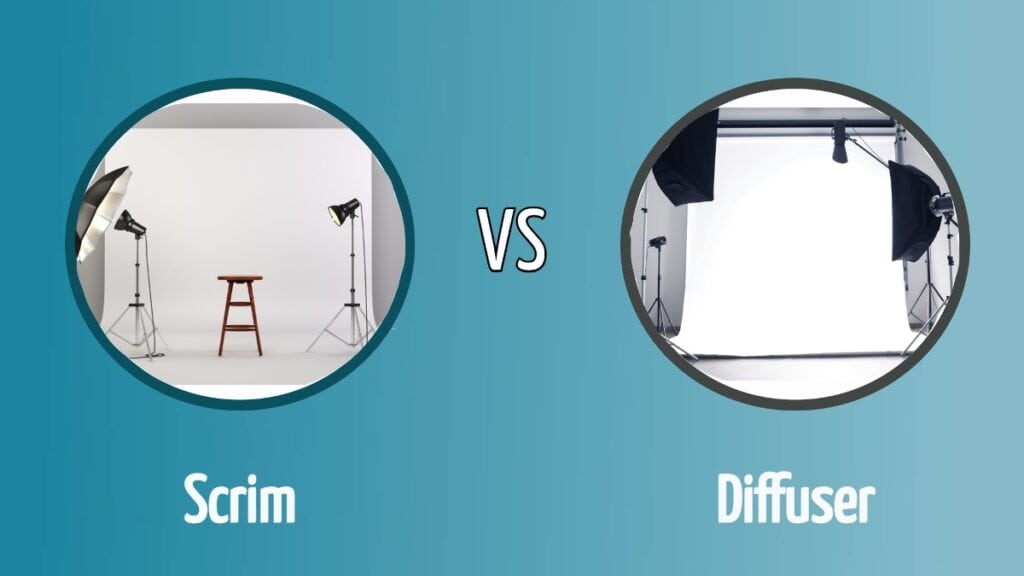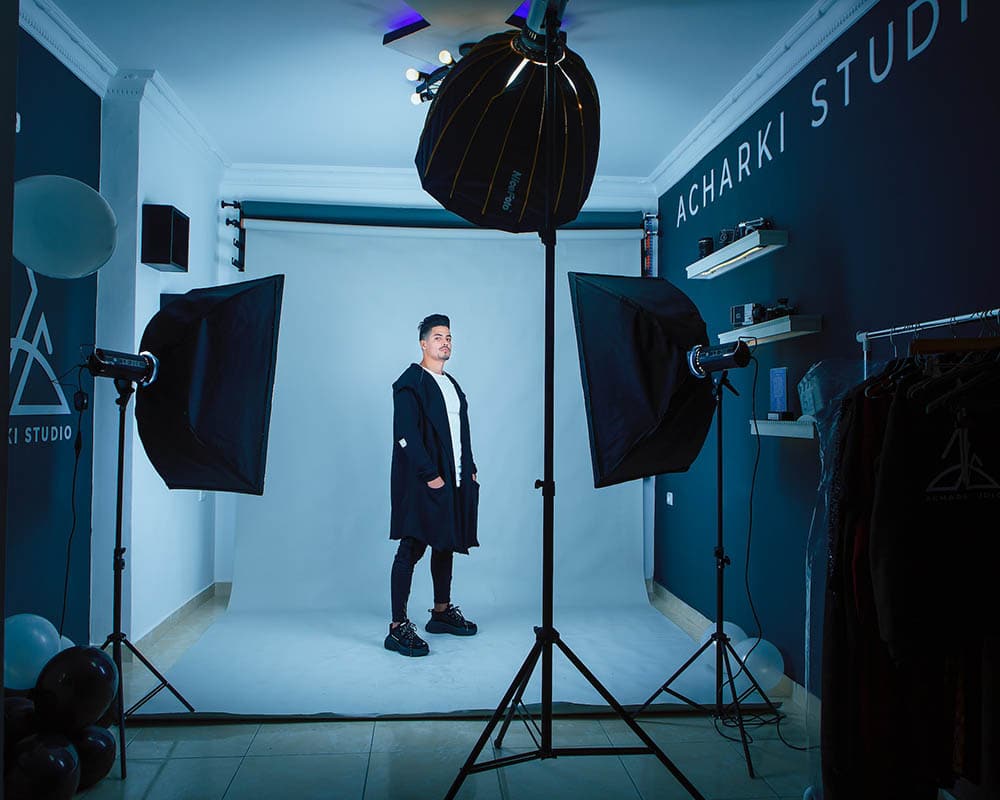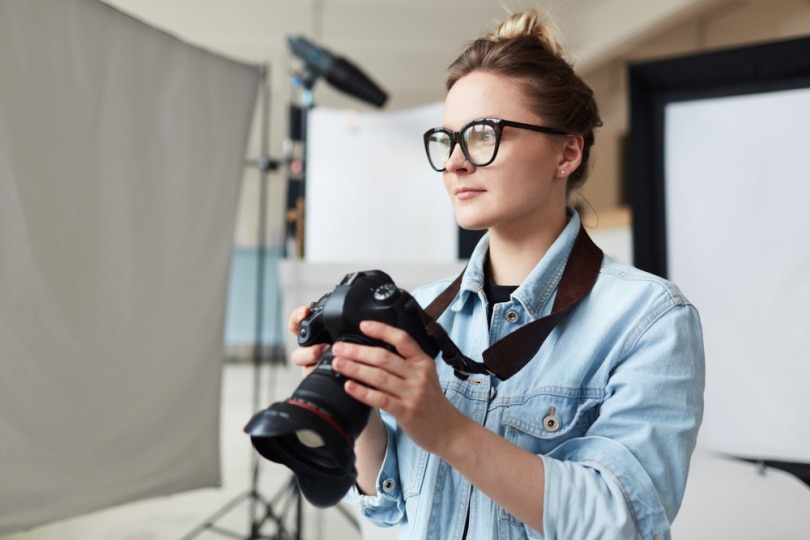Scrim vs. Diffuser: Which Should I Use?
Last Updated on

A scrim and a diffuser are similar tools used in photography to control how much light hits the subject. However, since they are so similar, it can be difficult to understand their differences. So, keep reading as we look at the scrim and diffuser to find out when to use each tool and how to tell them apart.
Overview of a Diffuser

How It Works
A diffuser is a semi-transmitted piece of material between a light source and a subject. As the light travels through the air, it will interact with other particles that it encounters, which will scatter the light. The more material or particles that it encounters, the more the light will be scattered, creating a soft glow instead of a sharp beam of light.
What It’s Good for
The soft light caused by diffusion helps reduce harsh shadows that can distort the appearance of your subject. Soft light is more flattering and enables color to be more vibrant. Another benefit of a diffuser is that it can help reduce squinting by your subject if they are in harsh sunlight. The downside of a diffuser is that it reduces the light output, so if you use one in a poorly lit room, it will likely only serve to produce a darker image.

- Softens light
- Makes the color more vibrant
- Can reduce squinting
- Gives you more control over your photographs
- Reduces light output

Overview of a Scrim

How It Works
The scrim and diffuser are extremely similar, and many people might argue that there is no difference between the two. However, a scrim diffuser tends to have a large square shape and is attached to a metal frame that enables it to tilt forward and back to achieve the proper effect, and best of all, the metal frame makes it possible to use hands free. Conversely, a diffuser can be anything that scatters light, including a paper towel that you hold in your hand. Many diffusers also attach directly to another component, like a flash diffuser.
What It’s Good for
A scrim is good for scattering light to help reduce harsh shadows. Its large size makes it good for locations with plenty of light, like outdoor photoshoots, as you can use it to block the sun. Since it tilts, you can achieve the perfect gradient of light and use it without an assistant. The only downside is that the large size and steel frame can make it harder to transport.

- Large
- Easy to operate alone
- Softens light
- Hard to transport

Other Factors to Consider
Material
Whether you are using a basic diffuser or a scrim, the type of material and the thickness will greatly impact how well it works. Thicker material will scatter more light, and it’s especially helpful when working in bright sunlight. A lighter-colored material is more reflective, so the glow that the diffuser creates will be brighter. Most people use white material, but other colors can add a hue to the image that enhances the subject.
Light Source
Another thing to consider when choosing a diffuser or scrim is the light source. The larger and stronger the light, the thicker the material will need to be to scatter it. Multiple light sources can also make it difficult to diffuse all the harsh light before it hits your subject, so you may need several diffusers.

Which Is Right for You?
Standard diffusers are good for small studios because many different kinds are available at a low cost. You can use small units if you don’t have much room or many bright lights, especially if you primarily take photos indoors. A scrim is good for a large studio, as the adjustable metal frame will help the photographer get the light gradient that they need without assistance. The large surface area of the scrim can scatter the light from bright bulbs, and it’s also a great choice when working outside.
- When working outdoors
- When using strong lighting
- When working alone
- When working on small projects
- When using standard lighting
- To reduce harsh shadows

Final Thoughts
A scrim is a type of diffuser, and its larger size will make you look like more of a professional at photo shoots. You can adjust it easily to achieve the lighting effect that you want. A diffuser is good when you are working quickly and need something immediately. Small diffusers are ideal when working with standard lighting.
Featured Image Credit: (L) Digital Genetics, Shutterstock | (R) Africa Studio, Shutterstock
About the Author Ed Malaker
Ed Malaker is a veteran writer who contributes to a wide range of blogs covering information on computer programming, pets, birding, tools, fitness, guitars, and optics. Outside of writing, Ed is often found working in the garden or performing DIY projects in the house. Ed is also a musician, spending his time composing music for independent films or helping people repair their guitars.
Related Articles:
How to Clean a Refractor Telescope: Step-by-Step Guide
How to Clean a Telescope Eyepiece: Step-by-Step Guide
How to Clean a Rifle Scope: 8 Expert Tips
Monocular vs Telescope: Differences Explained (With Pictures)
What Is a Monocular Used For? 8 Common Functions
How to Clean a Telescope Mirror: 8 Expert Tips
Brightfield vs Phase Contrast Microscopy: The Differences Explained
SkyCamHD Drone Review: Pros, Cons, FAQ, & Verdict
